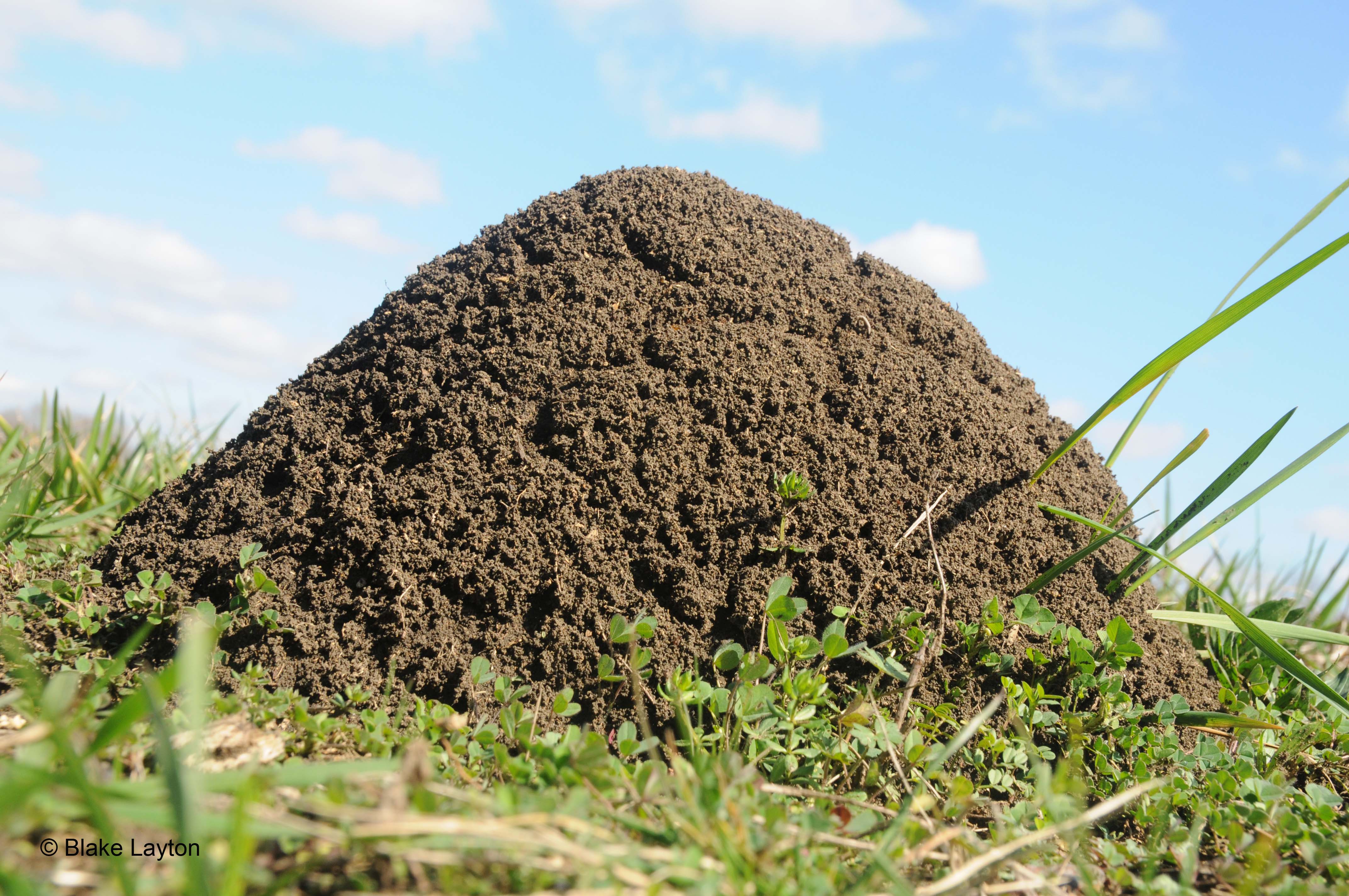Imported Fire Ant Mound, No. 22

Solenopsis invicta
Order: Hymenoptera
Family: Formicidae
Would you like to avoid having large fire ant mounds like this one in your yard next spring? Make an application of granular fire ant bait this fall. September is the ideal time for this fall bait treatment. Even if you don’t see any fire ant mounds in your landscape right now, you still need to treat because you probably have a lot more fire ants than you think. It can take six months or more for a newly established fire ant colony to grow large enough to be visible above the grass, and you probably have a lot of these young fire ant colonies in your yard right now. Even large, well-established colonies are not always easily visible this time of year. Under hot, dry conditions, fire ants keep their brood down in the cool moist soil and don’t always maintain the above ground portion of the nest, especially if the area is frequently mown. But in early spring, fire ants tend to build mounds high above the grass where they are more visible. They do this for two reasons: 1} to escape the water-saturated soil conditions that often occur due to heavy spring rains, and 2} to have a warm place to rear their brood early in the spring when it is too cold down in the soil. In this last case, the ants are using solar heating to warm their brood, and they even move brood to the side of the mound that has the most sun exposure.
Control: Amdro, Extinguish, Extinguish Plus, Advion, and Distance are examples of granular fire ant baits. The key to success with baits is to apply them as broadcast treatments over the area where you want to control fire ants. Don’t try to treat individual fire ant mounds with granular baits; you will miss most of the colonies in the yard. Instead, use a small, hand-held spreader to spread the bait over your yard at the rate given on the label. Even though granular baits are slow-acting, they are our most effective tools for controlling fire ants. When used correctly, baits are safe, affordable, quick, and easy to apply, and effective! Make this fall bait application and you will have a lot fewer fire ant mounds popping up in your lawn next spring.
See Extension Publication 2429, Control Fire Ants in Your Yard, for more information on fire ant biology and control, including information on granular fire ant baits. Also see the Fire Ant Web Site for detailed information on fire ant biology and information on controlling fire ants in special situations, like pastures, orchards, or vegetable gardens.
Blake Layton, Extension Entomology Specialist, Mississippi State University Extension Service.
The information given here is for educational purposes only. Always read and follow current label directions. Specific commercial products are mentioned as examples only and reference to specific products or trade names is made with the understanding that no discrimination is intended to other products that may also be suitable and appropriately labeled.

